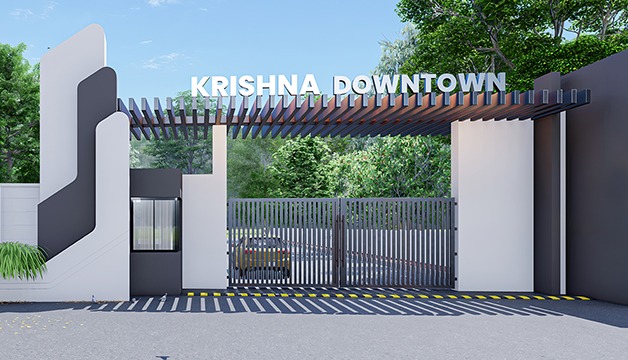As you begin your search for a new home, one of the first things you will notice is how frequently builders, real estate agents, or property websites mention different types of areas: carpet area, built-up area, and super built-up area. For a homebuyer, especially one new to the property market, these terms can be quite new.
Knowing these terms is crucial for understanding how much space you get, the price you pay, and the value of your investment. Not knowing the distinctions can lead to paying higher for a smaller space or having a distorted understanding of the usable area of your future home.
In this article, we intend to clarify each and every term in detail and why they matter so much in the purchase of a house or apartment.
1. What is a Carpet Area?
The Carpet Area is the area covered by the carpet itself which is the space where you can place your furniture, walk around and live. In simple words, it is the area covered by a carpet if one were to spread it across the floor of your home.
Carpet area includes:
. Bedrooms
. Living room
. Kitchen
. Bathrooms
. Internal passage/ hallway
Carpet area does not include:
. Walls of the house
. Balconies
. Verandas
. Terrace
For example, if you are buying a flat of 1,200 sq. ft (super built-up area), the carpet area is usually around 70% of it, which comes to about 840 sq. ft. This means the actual usable living space inside your home will be 840 sq. ft.
Why it matters:
Carpet area is the most important measure because it tells you exactly how much space you will get to use in your daily life. Always ask the builder for the carpet area before finalizing a property.
2. What is a Built-Up Area?
The built-up area is slightly bigger than the carpet area. This is composed of the carpet area along with the width of the walls and other usable areas such as a balcony or terrace that is attached to the house.
Built-up area = Carpet area + wall thickness + balcony/terrace area.
The built-up area is typically 10-15% greater than the carpet area.
For instance:
Assuming the carpet area of the flat is 840 square feet, the built-up area might be around 950–1,000 sq. ft.
Why it matters:
While the carpet area shows the space you can use inside, the built-up area gives a more complete picture of the actual construction space you are paying for. Some builders may highlight the built-up area instead of the carpet area to make the property sound larger, so it’s important to understand the difference.
3. What is a Super Built-Up Area?
The super built-up area is what most builders and developers use when they advertise the size of a flat. It is the built-up area of your home plus a proportionate share of the common areas in the building.
Common areas include:
. Lobby
. Staircases
. Lifts
. Gym
. Clubhouse
. Swimming pool
. Security rooms
. Gardens and corridors
Super built-up area = Built-up area + proportionate share of common areas.
This is also known as the “saleable area” because property prices are often calculated on the basis of a super built-up area.
For example:
If the built-up area of a flat is 1,000 sq. ft, and your share of the common area is 200 sq. ft, the super built-up area becomes 1,200 sq. ft.
Why it matters:
Most builders use super built-up areas to fix the property cost. So, while you may feel you are buying a 1,200 sq. ft flat, the actual usable carpet area might be only 840 sq. ft. This is why understanding the difference is important before making your decision.
4. Key Differences Between Carpet, Built-Up, and Super Built-Up Area
To make things simple, here are the main differences explained in points:
- Carpet Area: This is the usable area inside your home. It includes bedrooms, kitchen, bathrooms, and living room, but it does not include walls, balconies, or common spaces. Usually, it makes up about 70% of the total area.
- Built-Up Area: This includes the carpet area plus the thickness of walls and attached spaces like balconies or terraces. It is normally 10–15% bigger than the carpet area, making up around 80–85% of the total area.
- Super Built-Up Area: In India quote prices according to the super built-up area of their properties, making it hard for common people to buy houses. It is often considered the “saleable area” and is 100% of the total area shown by builders.
- Main Difference: Carpet area shows the real usable space, built-up area adds walls and balconies, while super built-up area also includes shared facilities.
5. The Rationale Behind Builders Using Super Built-Up Area
The question that often comes up is, why do sellers focus on promoting the super built-up area and neglect the carpet area? The reason is simple: it makes the property look bigger on paper.
For example, if a builder says you are buying a 1,200 sq. ft flat, it sounds attractive. But the carpet area might actually be only 840 sq. ft. Since prices are calculated using the 1,200 sq. ft measurement, buyers are essentially paying for an area they cannot use inside their home. This is exactly the issue that the Real Estate Regulation and Development Act (RERA) seeks to address by requiring real estate developers to disclose the carpet area of the property. It makes it easier for the buyer to grasp the extent of the usable area of the property.
6. Tips for the Prospective Buyers
When purchasing a property, keep in mind the following tips:
Always request the carpet area: It is by far the most accurate and trustworthy indicator of the actual space available in the home.
Do price comparisons on the basis of the carpet area: This allows you to assess the genuine value of the property.
Verify the loading percentage: Loading refers to the difference between the carpet area and the super built-up area.A reasonable loading percentage is usually between 25–35%. Anything higher may mean you are paying more for less space.
Request a floor plan: Examine the developer’s floor plan to get an insight into how the spaces are carved out between carpet, built-up, and super built-up areas.
Watch out for deceptive advertisements: Some developers might focus only on advertising the super built-up area. Get the full information in writing before you agree to anything.
7. Significance of the Concept
You made a purchase of the house. Even a minor misunderstanding regarding the spatial dimensions of the house can impact your ease, way of life, and the house’s value in the long run.
. Focusing solely on the super built-up area can set your expectations too high, leading to greater disappointment when usable space turns out to be much less.
. Knowing the carpet area lets you arrange the interiors, get a real sense of the space, and even bargain wisely with the builder.
. In comparing different homes, checking the carpet area gives you a better basis to judge than to purely rely on the figures in the ads.
Conclusion
Carpet area, built-up area, and super built-up area are three very important terms in real estate. Carpet area is the sum of all the rooms, while built-up area accounts for the carpet area plus the walls and balconies. The super built-up area also includes shared spaces such as the lobby, staircase, and lifts. When a person is buying a home, his attention should be on the carpet area, as that is the true area of the home, the home where he will reside, cook, and even create cherished memories. Comparing the carpet area of several homes enables him to better evaluate the properties and protects him from being overcharged. If you want to shop in projects that have homes offering clarity and value, Krishna Downtown is one of those projects that provide area breakup so that the buyers may take an informed call.



